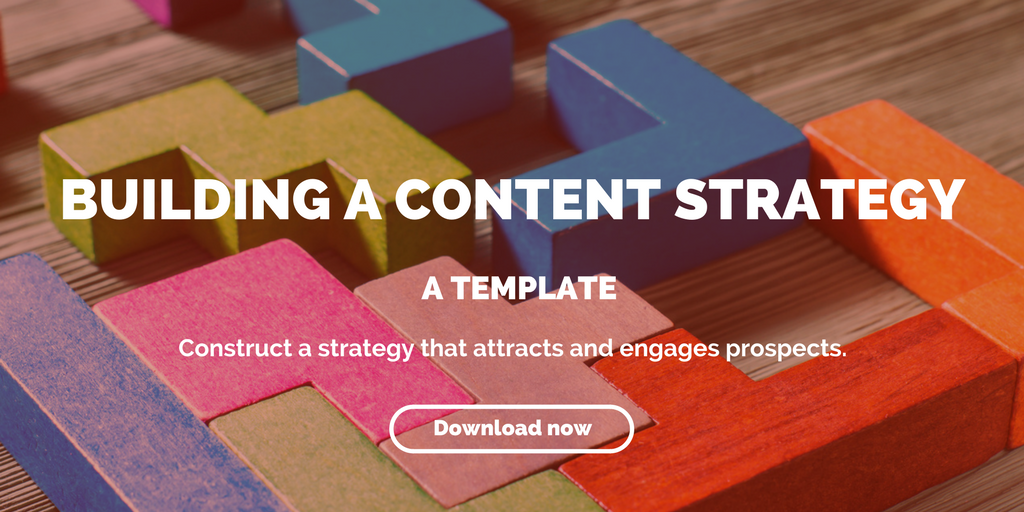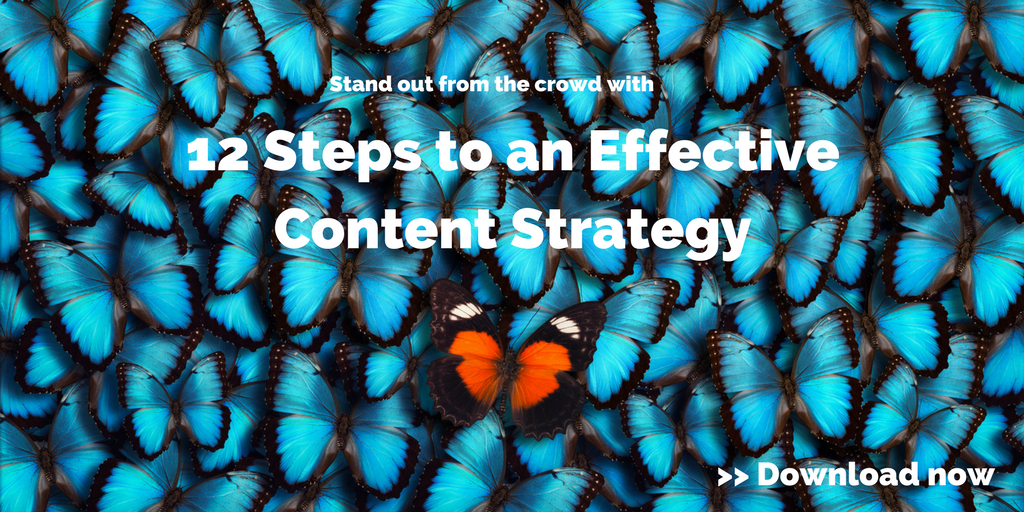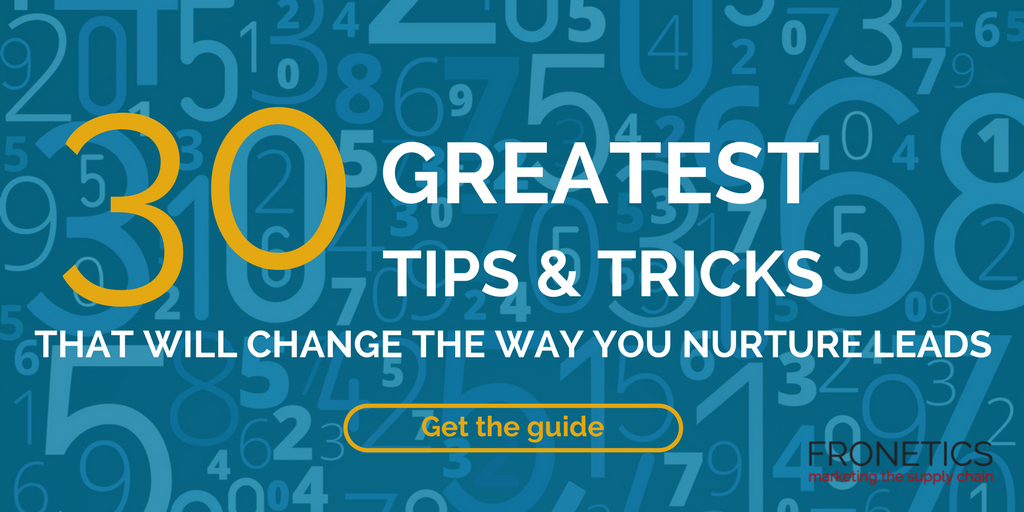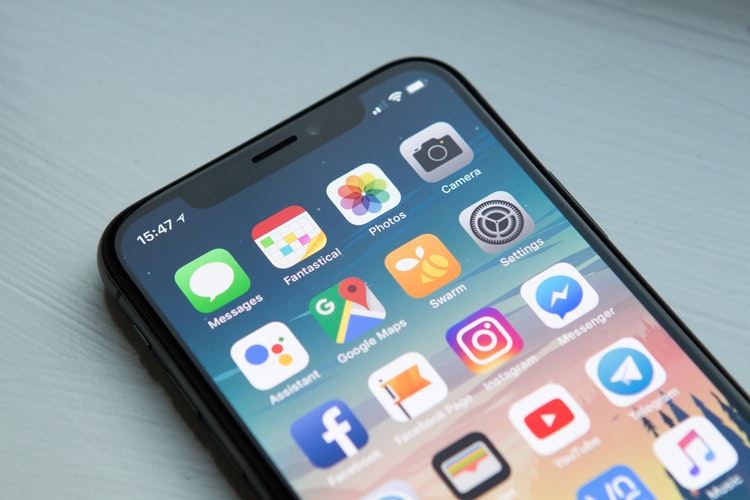
by Fronetics | Jul 19, 2018 | Blog, Content Marketing, Logistics, Marketing, Social Media, Strategy, Supply Chain
In part three of our series on effective lead generation and nurturing, we walk you through the components of effective landing pages that convert visitors to leads.
If you’ve been keeping up with our four-part series on effective lead generation, you should be up to speed on creating a valuable offer and a call-to-action that works. The next step in a finely tuned lead generation process is a landing page that converts.
Why does my offer need a landing page?
[bctt tweet=”Landing pages are crucial, and brands miss out on opportunities when they fail to optimize them. According to HubSpot, marketers see an average 10% conversion rate on landing pages — that represents a huge amount of missed opportunities.” username=”Fronetics”]
Landing pages are crucial, and brands miss out on big opportunities when they fail to optimize them. In fact, according to HubSpot, marketers have seen an average 10% conversion rate on landing pages — that represents a huge amount of missed opportunities. Brands that have it right, those that focus on designing for conversions, reap the benefits in big ways.
Your primary objective for a landing page is to get visitors to submit their contact information in exchange for the offer. At this point in the process, your potential customer has already engaged with your call-to-action, meaning he or she is interested in your offer. When they get to your landing page, everything they find there should affirm their choice to and assure them that the content they are about to download is going to be relevant, interesting, and valuable.
Designing landing pages that convert
So what are the hallmarks of a great landing page? Starting with the basics, your landing page should briefly, simply, and clearly describe the benefits of your offer. It’s important that there be as few distractions as possible. For example, make sure the page doesn’t have a top navigation menu. Bonus points for including ways to share your offer on social media.
Additionally, you should make sure that your landing page doesn’t include links to other things on your website, as they can distract the lead and perhaps send them somewhere else on your website where they can find the information you’re presenting in your offer.
As you design your landing page, keep this checklist in mind:
- Is it clean, organized, and clearly presented?
- Is there any ambiguity about where or how leads should enter their information?
- Does it describe the benefits of my offer?
- Is it free of extraneous or distracting content or links?
- Is it mobile-friendly?
- Does it contain easy ways to share on social media?
If you follow these tips for landing pages that convert visitors to leads, we’re confident you’ll start to see an uptick in your website conversion rate almost immediately.
Related posts:


by Fronetics | Jul 18, 2018 | Blog, Content Marketing, Logistics, Marketing, Supply Chain
Once you’ve decided how to create and package a valuable offer, the next step in an effective lead generation is creating calls-to-action that convert leads.
If you read part one of our four-part series on effective lead generation, you’re familiar with the first step in creating a campaign that will generate a high volume of quality leads: creating a valuable offer. So what’s next?
In part two of this series, we’re exploring how to draw visitors from reading content on your website to taking a desired action.
When we talk about this second step, we use the term “call-to-action” (CTA). It refers to the tool that asks the reader of your content to take the next step — rather than just assuming they will do it. A call-to-action can be in-line text with a hyperlink, a button, or an image-based web-banner.
Why do you need a CTA?
CTAs are the vital step where you ask your potential client or buyer to take an action that moves them one stop closer to your objective of connecting them with your company. But plenty of marketers forget this crucial element of an effective campaign.
If you’re offering high-value content (like an ebook, webinar, infographic, or product demonstration), but you aren’t including a specific CTA, you’re not giving your audience direction for obtaining the offer — and you’re probably missing out on plenty of qualified leads.
[bctt tweet=”If your CTAs aren’t effective at capturing the attention of your prospective leads and persuading them to click, then no matter how impressive your offer or how well-written your content, it’s pretty much useless.” username=”Fronetics”]
A CTA is yet another opportunity to optimize your campaign. Remember that you’re competing with every other brand in a fight for the attention of your audience, and you need to make the most of every opportunity to draw them toward your business.
Keep in mind that if your CTAs aren’t effective at capturing the attention of your prospective leads and persuading them to click, then no matter how impressive your offer or how well-written your content, it’s pretty much useless. Your CTA can be used on product pages, in display ads, email, social media, direct mail, or pretty much anywhere you’re marketing your offer.
Elements of calls-to-action that convert leads
Not all CTAs are created equal. As you think about incorporating a call-to-action into your offer, keep in mind these 4 tips for maximizing its productivity:
1. Choose your location wisely.
Back when people read newspapers, editors would place important news “above the fold:” high enough on the page so the reader wouldn’t have to unfold the paper to see it.
A well-placed call-to-action follows the same principle, and should be high enough on the page so your target lead won’t have to scroll down to see it. You should also place a second CTA further down within the offer.
2. Be clear.
You don’t want to leave your reader puzzling about what will happen when he or she follows your CTA. State the offer clearly, and be specific. For instance, rather than “download now,” say “download your free ebook.”
3. Don’t hide your light.
Your call-to-action should stand out on the page. Choose contrasting colors for your CTA, so it draws the eye and doesn’t blend into the rest of your text.
We’ve found, in many cases, our clients have the most success with calls-to-action that are image-based (particularly in emails). A really well-designed, attractive, image-based CTA can effectively draw click-throughs in a way other kinds of calls-to-action can’t. Give it a try!
4. Link to a landing page.
Send potential leads to a targeted landing page that is relevant to what they are looking for. Your CTA should send them to a page that will convert them into a lead.
For more information, check back in with our next post, when we explore how to create a landing page that converts leads.
How do you design calls-to-action that convert leads?
Related posts:


by Fronetics | Jul 17, 2018 | Blog, Content Marketing, Logistics, Marketing, Strategy, Supply Chain
The first step in an effective lead generation campaign is creating valuable offers to convince website visitors to entrust you with their contact information.
Welcome to part one of my series on effective lead generation.
In this four-part series, I’ll guide you through the four most crucial components of the creating an effective lead-generation and lead-nurturing campaign. And I’ll help you tailor your strategic marketing objectives to generate a high volume of quality leads.
Today, we’re looking at how to create valuable offers, the first step in converting a website visitor into a lead.
Offering value
To generate a lead, you need to convince visitors on your website to give you their contact information — and this takes work. You can’t simply expect them to generously hand over their personal information. (Don’t we all get enough emails?!) This means you need to tempt them with something they really want, which you give them in exchange for their contact info.
You may be asking, what will my audience find valuable? And this is where your content comes into play.
[bctt tweet=”Well-written, high-quality content is always more effective at generating leads than an overt sales pitch.” username=”Fronetics”]
One of the fundamental principles of content marketing is that your expertise is just as valuable as your products and services. Well-written, high-quality content is always more effective at generating leads than an overt sales pitch.
Creating valuable offers
When designing your content, keep these three questions in mind:
1. What does my audience need?
It might seem like a basic consideration. But before you jump with both feet into creating an offer, take a step back and really consider the needs of your audience.
This is a good time to check out other industry blogs, social media, and online forums like Quora. What kinds of questions are your prospective buyers asking? What problems are they facing, and how can you help them?
2. How do I best serve the information I’m presenting?
Once you have a clear, well-researched idea of what your audience needs, think about what format best serves the content you’ll be offering them.
Depending on how your information should be structured, valuable content offers could be industry reports, guides, infographics, free consultations, product demonstrations, discounts, or webinars. You’ll often find that you can repurpose your existing content into an exclusive new, valuable offer.
3. How do I let my audience know that my offer is valuable?
So you’ve figured out what your audience needs, and created and structured a content offer to meet that need. Now it’s time to let your audience in on the secret.
The higher the perceived value of an offer, the more irresistible it becomes. And a big part of what we perceive to be valuable is about exclusivity and high demand.
To create this feeling of exclusivity and demand, use elements like:
- Limited-time offers
- Limited quantities
- X number of people have seized this offer
- Content that matches current trending topics
- A title that hooks interest
When you create an offer that your target audience perceives as truly valuable, your lead-generation efforts will begin to grow exponentially.
What tips do you have for creating valuable offers? Want to learn more about the crucial components of the creating an effective lead-generation and lead-nurturing campaign? Here’s the rest of the posts in our series:
Related posts:


by Fronetics | Jul 16, 2018 | Blog, Content Marketing, Logistics, Marketing, Strategy, Supply Chain
Updated December 11, 2024
Whether you’re selling manufacturing solutions, logistics services, or technology, your supply chain lead generation strategy must address specific industry pain points like inventory optimization, transportation costs, and supplier relationship management.
While content marketing works across industries, supply chain decision-makers have unique needs. Procurement managers, logistics directors, and supply chain VPs face complex challenges:
- Multi-stakeholder buying committees
- Long sales cycles (often 12-18 months)
- High-value purchasing decisions
- Complex technical requirements
- Regulatory compliance concerns
- Integration with existing systems
Let’s explore how to adapt the four core components of lead generation specifically for supply chain audiences.
The 4 Essential Components of Supply Chain Lead Generation
1. Creating High-Value Supply Chain Offers
Supply chain professionals seek concrete solutions to operational challenges. Effective offers include:
Industry Reports:
- Annual logistics cost benchmarking studies
- Regional supplier capability assessments
- Port congestion and capacity forecasts
- Last-mile delivery performance analysis
Technical Resources:
- Warehouse automation ROI calculators
- Transportation management system comparison guides
- Inventory optimization modeling templates
- Supplier risk assessment frameworks
Educational Content:
- Supply chain sustainability certification programs
- LEAN logistics implementation playbooks
- Digital twin technology adoption guides
- Blockchain in supply chain webinar series
2. Supply Chain-Specific Calls-to-Action (CTAs)
Customize your CTAs to resonate with supply chain roles:
For Procurement:
- “Download Supplier Evaluation Template”
- “Access Vendor Management Toolkit”
- “Calculate Potential Sourcing Savings”
For Logistics:
- “Benchmark Your Warehouse Costs”
- “Map Your Distribution Network”
- “Optimize Your Fleet Performance”
For Supply Chain Technology:
- “Compare TMS Features”
- “Schedule WMS Demo”
- “Download Integration Roadmap”
3. Converting Landing Pages for Supply Chain Professionals
Design landing pages that address industry-specific concerns:
Technical Validation:
- Integration capabilities with ERP systems
- API documentation
- Security certifications
- Compliance standards met
Operational Proof:
- Industry-specific case studies (e.g., automotive, retail, pharmaceuticals)
- Performance metrics (e.g., inventory reduction, on-time delivery improvement)
- Implementation timelines
- ROI calculations
Social Proof:
- Logos of recognized supply chain brands
- Industry awards and certifications
- Partnership badges (SAP, Oracle, etc.)
- Client testimonials from supply chain leaders
4. Strategic Form Fields for Supply Chain Lead Qualification
Capture information crucial for supply chain lead scoring:
Company Profile:
- Annual freight spend
- Number of distribution centers
- Current transportation modes
- Manufacturing locations
- System landscape
Project Context:
- Current supply chain challenges
- Priority initiatives
- Decision timeline
- Budget range
- Required integrations
Role Information:
- Position in supply chain organization
- Purchase authority level
- Technology decision-making role
- Geographic responsibility
Supply Chain Lead Nurturing Strategies
Once you’ve captured leads, nurture them with industry-specific content:
Early Stage:
- Educational content about supply chain trends
- Industry benchmark reports
- Thought leadership webinars
Middle Stage:
- Technical specification sheets
- Implementation guides
- Customer success stories
Late Stage:
- Custom ROI analysis
- Pilot program proposals
- Integration assessment reports
Measuring Supply Chain Lead Generation Success
Track these key metrics:
- Lead-to-opportunity conversion by industry vertical
- Sales cycle length for different solution types
- Implementation success rates
- Customer lifetime value by segment
- ROI achieved by solution category
Next Steps in Your Supply Chain Lead Generation Journey
Over the coming weeks, we’ll explore advanced topics including:
- Supply chain buyer persona development
- Industry-specific content strategies
- Technical validation frameworks
- ROI calculation methodologies
Sign up for updates to get these insights and more on generating and nurturing qualified leads in the manufacturing, distribution, and logistics sectors.
Related posts:

by Fronetics | Jul 12, 2018 | Blog, Content Marketing, Logistics, Marketing, Supply Chain
Meta descriptions help boost your SEO, driving more traffic to your posts and more quality leads on your website.
You’re trying your best to become an expert in SEO optimization. You’re working hard to create valuable content, finding visually pleasing images to accompany your posts (and adding alt text), and using internal and external links throughout. But many of us marketers fail to acknowledge the importance of a strong, interesting meta description.
What is a meta description?
According to Wordstream, a meta description (sometimes called a meta description attribute or tag) is an HTML element that describes and summarizes the contents of your page for the benefit of users and search engines. Broken down into laymen’s terms, this means that meta descriptions are a short snippet of text that appears on a search engine results page (SERP) under your page title to describe to readers exactly what your content is about.
Why are meta descriptions important?
A strong meta description can draw visitors to your content. As they scroll through organic search results, your meta description is their first glance at what they can expect from your page, making it a very visible part of search marketing. A compelling meta description gives you a brief overview of what the content is about, as well as a convincing reason to click on the link to your page.
[bctt tweet=”As visitors scroll through organic search results, your meta description is their first glance at what they can expect from your page, making it a very visible part of search marketing. ” username=”Fronetics”]
Sounds pretty simple, right? Writing persuasive meta descriptions can actually be quite challenging.
The character-count limit, which depends on your content management platform, keeps your descriptions to not much longer than a tweet. It’s a lot of pressure for marketers to come up with short but captivating snippets as to why a reader should click on your page. Hence why most marketers tend to glance over this key factor in SEO optimization.
Here are five tips to help you start writing better meta descriptions and increasing your click-through rates quickly.
5 tips for writing better meta descriptions
1. Keep it to 155 characters.
According to Moz’s research team, the optimal character length for meta descriptions is 150-160 characters. Anything longer and most search engines will cut off your description.

As you can see above, longer descriptions that get cut off don’t give readers a full picture of what your page is about. It’s important to keep to the optimal character count, giving readers a clear understanding of why they need to visit your page.
2. Read, read, and read again: no grammatical errors.
This seems pretty straight forward, but grammatical errors in a short description are bad. Really bad. Make sure you go back and read (and reread) your meta descriptions before you post them. And don’t be afraid to ask your coworkers to double check your work — sometimes it’s hard to see errors in your own writing. Your descriptions are a direct reflection of your content and therefore need to be flawless.
3. Don’t shy away from offers.
We’ve all seen a meta description that adds “30-day trail free” at the end. And why not? Essentially, a meta description is a hook for visitors to click on your page. Incentives are a great way to help your page stand out from the competition. Including short call-to-actions or offers in your description lets visitors know what’s waiting for them when they visit your site. It’s a great way to boost your content and get the most value from your meta descriptions.
4. Beware of Google AdWords.
Google AdWords is a form of paid advertising that prioritizes paid ads over organic search results. This is great if you’re paying for advertising. But if you’re like many marketers, you’re hoping to be at the top of the search results because you’re working hard to optimize your content. Because Google now posts the top four search results through AdWords, your content has to work harder to get to the top of the search results lists, making your meta descriptions more important than ever.
Focus on writing descriptions that provide value and invite readers to click on your site, other than trying to sell yourself. A more natural, inviting meta description will help you stand out against the paid ads also appearing in the search results.
5. Test and change.
As with all aspects of content marketing, your efforts should never be stagnant. It’s imperative that you track, test, and change your game plan according to how well — or, in some cases, how poorly — the efforts turn out.
This absolutely applies to your meta descriptions as well. Don’t be afraid to search your keywords and compare competitors’ meta descriptions against your own. Adapt what you’re doing to what is driving the best results. Do descriptions with offers gain more visits? Are your descriptions coming across as uninviting? Make adjustments along the way until you find what works best for you.
Have you given much thought to your meta descriptions? What tricks have you used?
Related posts:


by Fronetics | Jul 11, 2018 | Blog, Logistics, Supply Chain
Here are 10 mobile apps for supply chain professionals to get out from behind their desk, streamlining processes right from a phone.
In an industry focused on the transport of products and goods, mobile apps are giving supply chain professionals a new freedom from the confines of their desks. The need for real-time data, remote management, and on-the-go decision-making has never been greater.
Gone are the days of the costly, rugged devices that managed warehouse and transport operations over a decade ago. With improved technology and updated applications, these devices have become irrelevant, as supply chain and logistics professionals find these services right in the palm of their hands, and at a much lower price point.
Key benefits of mobile apps in supply chain management
Cost isn’t the only driver behind the increased popularity of phone apps. Other benefits include:
- Real-time updates for better inventory and operational control
- Enhanced portability for on-the-move management
- Precision monitoring of supply chain processes
- Increased efficiency and productivity
- Improved customer service through faster response times
Here are 10 apps for supply chain professionals to be familiar with. Each individual app offers unique solutions to supply chain and logistics processes.
10 mobile applications for the supply chain professional
Logistimo enables anyone to easily manage supply chain and logistics in rural, emerging markets. If you are a retailer, distributor, transporter, or agent, Logistimo can help you get real-time visibility of your inventory and orders, while easily reporting on sales, purchases, and demand information using the mobile application.
Mobile SCM aids in controlling the trade and logistics processes while cutting down on cost. This app can help contribute to your business ROI by monitoring stock movement from the warehouse, customer shipments, and inventory reconciliation.
The LINK application contains features that manage the shipment of ordered goods and generate reports through push notifications, even if the phone is offline. Apart from monitoring, the application aids accessing shipment documents, finalizing the delivery process, and evaluating the overall quality of the service on delivery.
Scandit is an application that enhances the inventory process with an innovative barcode scanning technology. It provides customers with a user-friendly, branded mobile application that puts an entire product catalog at their fingertips. Distributors and vendors can increase order frequency and drive customer loyalty with cross-platform capabilities.
The EazyStock Mobile App gives instant access to everything you need from your ERP system data while you are on the go. EazyStock features powerful inventory dashboards and reports to extend senior leaders, financial controllers, and purchasing managers a 360-degree view of the inventory they carry.
The ServiceMax Field Service App is developed to improve field productivity with any device. Designed from the ground up with field technicians and engineers in mind, it provides a refined interface, consistent access and targeted service workflows. The app offers a range of services from field service contracts, order management, workforce optimization, parts management, social media customer monitoring, customer communities, and analytics.
Kintone’s flexible, cloud-based tools offer robust supply chain management solutions for better, smarter workflows. With customizable inventory tools and low-code/no-code development options, users can make this app work for their specific needs on all their devices.
Halo is a collaborative, scalable application helping you accurately measure supply chain performance and make decisions that benefit your bottom line. It offers advanced analytics for better decisions, integrated data quality controls, and complete visibility into your operations.
StockIQ is an application design to track and monitor your warehouse inventory. It will suggest grouped transfers to help you efficiently re-balance your inventory while offering a supplier management module that allows you to use lead times calculated from actual receipt history.
TrackVia’s fully customizable supply chain software eliminates manual, paper, or spreadsheet-based workflows and provides you with access to real-time reporting and actionable insights on your key SCM operations. Use TrackVia to streamline processes gaining greater control and visibility around all of your supply chain management processes with web and mobile applications, tailored to fit your unique needs.
By leveraging these cutting-edge mobile applications, supply chain professionals can enhance their operational efficiency, make data-driven decisions, and stay competitive in an ever-evolving industry landscape. Remember, the key to maximizing the benefits of these apps lies in selecting the ones that best align with your specific supply chain needs and integrating them effectively into your existing processes.
What mobile apps for supply chain pros do you recommend?
Related posts:











